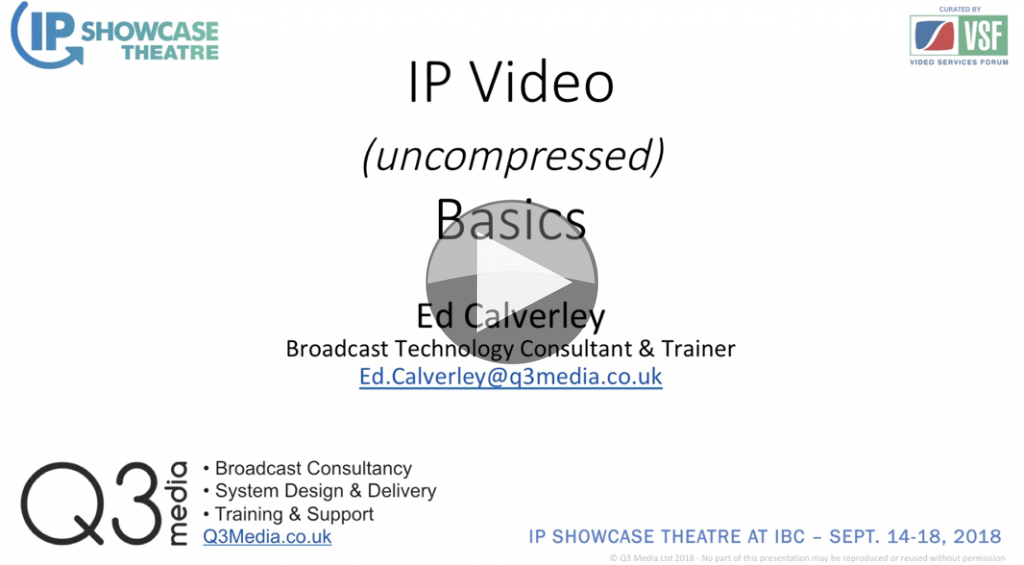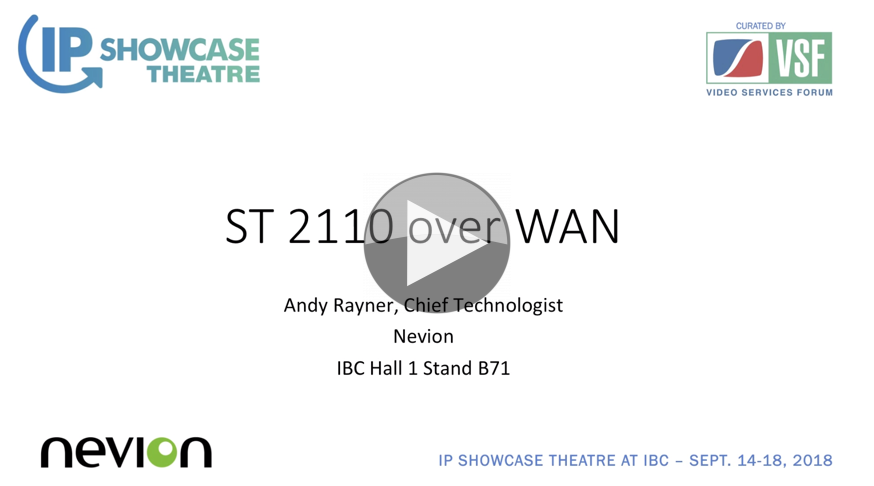
To the uninitiated, it’s not obvious how to send video over IP, what things are important to think about and how close it is to an analogue/SDI signal. Fortunately, Ed Calverley has this excellent tutorial on the basics needed to understand uncompressed video across the board.
This presentation from the IBC 2018 IP Showcase examines the need for timing, a reminder of what ‘blanking’ is and how this is treated in the over-IP world. Discussion of blanking wouldn’t be complete without a discussion of ancillary data (VANC, HANC, DPI, Embedded audio etc.) Whilst blanking was essential in analogue video and is filled with data in SDI, there is a benefit in breaking the signal up into its component parts: video, audio and ancillary data – not least removing up to 30% of dead space; blanking takes bitrate!
Now that Ed’s established the key points of the video which need to be transported, how and where they exist, it’s time to look at how to actually get the data on the network. To do this Ed presents a very accessible explanation of IP discussing how we can split up any message into packets and how we add headers to the packets to ensure they go to the right place. This leads on to a discussion of UDP and TCP, both ways of launching traffic onto a network but with their own pros and cons.
This builds into an examination of subnets, routing and multicast. Whilst these sound fairly academic – and to be clear they can be – they are also essential to a well-founded understanding of the topic and are useful day-to-day when working with SMPTE ST 2110 and SMPTE ST 2022-6 systems. Both of these terms are also explained by Ed along with and comparison of SDI timing (usually black and burst, or tri-Level sync) and PTP timing which is used for IP systems. For more detail on PTP, have a look at this talk, or this one also from the IP Showcase
Wrapping up by talking about the important topic of packet timing called ‘traffic shaping’, we see how important it is to ensure that each packet is equally spaced to avoid problems with buffers on receiving equipment or even within the network itself.
Ed’s presentation style and animated slides work excellently together to make this talk very understandable to people coming in fresh to IP systems and, many of us should be willing to admit, a great reminder of the key basics for those who are already on the path. The slides are downloadable and annotated with extra information so they stand on their own as a reference. The only thing missing from the downloaded slides is Ed’s final video demonstrating traffic shaping in the form of planes land at Heathrow.
Watch now!
Speaker

|
Ed Calverley
Trainer & Consultant,
Q3Media |









